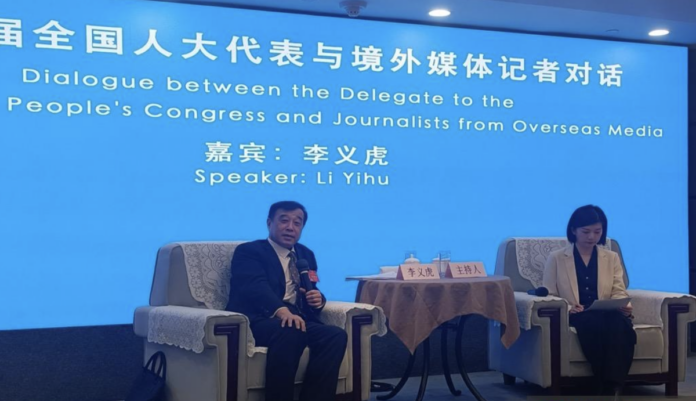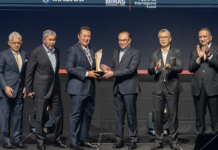BEIJING, March 12 – Malaysia and China will have a constant increase in economic and trade activities while continuously improving cooperation and development between both countries.
Peking University’s Professor in the School of International Studies Li Yihu said both countries have maintained dynamic cooperation over the years under the bilateral and multilateral frameworks such as the China-ASEAN Framework as well as the Belt and Road Initiative.
“I hope that through mutual visits and communication between the National People’s Congress (NPC) of China and the Malaysian Parliament, we can join hands to push forward our friendship and partnership,” he told foreign journalists on Sunday.
Li, who is also the university’s Institute of Taiwan Studies and the NPC member of the foreign affairs committee, noted that Malaysia is a very important country within the ASEAN community.
“Several years ago, I accompanied the NPC’s vice-chair of the standing committee to visit Malaysia and paid a visit to the Malaysian Parliament. This is one of the examples for the good cooperation between China and Malaysia in economy and civil communication,” he added.
China has been Malaysia’s largest trading partner since 2009.
Last year, China continued to be Malaysia’s largest trading partner for 15 consecutive years, taking up 17.1 per cent share of Malaysia’s total trade.
Trade with China fell by 7.3 per cent to RM450.84 billion from the preceding year amid a challenging global economic landscape in 2023 that has adversely impacted international trade including Malaysia’s trade performance, which experienced a contraction.
Among Malaysia’s exports to China last year were the electrical and electronic (E&E) products, palm oil and palm oil-based agriculture products as well as iron and steel products while imports include the E&E products, machinery, equipment and parts as well as chemicals and chemical products.
Meanwhile, SPI Asset Management managing partner Stephen Innes said the semiconductor industry was emerging as a significant driver of investment flows into Malaysia, particularly amid the ongoing artificial intelligence boom.
He noted that foreign investors were increasingly attracted to Malaysia’s semiconductor sector, especially with the United State (US) semiconductor supply chains shifting away from China due to the ongoing tech war between the superpowers.
This presented a substantial opportunity for Malaysia’s economy, reminiscent of the era when Malaysia was hailed as the Silicon Valley of the East, added Innes.
“However, there are broader concerns regarding the potential impact of US tariffs on China’s export products. Malaysia is a crucial commodity and industrial fabrication supplier to China, making it vulnerable to trade tensions between the US and China,” he told Bernama.
While Malaysia stands to benefit from the shifting semiconductor supply chains, Innes noted that there were potential red flags, particularly concerning the political implications of the China-US trade war.
“The return of Donald Trump to the White House, with his promise to impose significant tariffs on Chinese goods, could further exacerbate these tensions and pose challenges to Malaysia’s economic stability and trade relationships,” he added.
On the US-China trade relations, Li pointed out that a series of extreme measures had been put into place to build this high pressure on China by former US President Donald Trump and were continued by his successor, President Joe Biden.
“This is the so-called ‘a small yard and high fence’ to build a high defensive system against the high-tech progress of China. This is also trying to block the development of high technology,” he added.
Li said that in 2022, the US banned its chip exports, in particular high-end computer chips, to China while in August 2023, Biden issued a presidential executive order to establish a censorship system for foreign investment targeting micro electronic, quantum science, artificial intelligence and other high technologies.
In the latest move of the trade relations, the US is considering slapping sanctions on Chinese companies it believes are helping Russia fuel its war in Ukraine, after similar measures were proposed in February this year by the European Union.
Li noted that currently, there are about 11,300 Chinese enterprises on different US sanction lists.
“This defence mechanism is trying to curb the global chain of technology, in particular high technology. China will also make counter measures on this kind of defensive attitude. China insists on an open and inclusive development for a win-win situation for the future and for cooperation.
“We are totally against building a high fence against a small yard. We advocate an open global economy,” said Li.
















